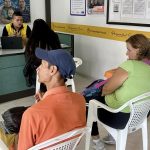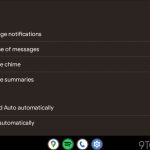The Prime Minister of Singapore communicated the situation. The great free trade agreement, boycotted by Trump, was thought of in an anti-China key. Ongoing negotiations with Great Britain. China’s accession would exclude the US and Taiwan.
Beijing () – Among the member countries of the Comprehensive and Progressive Agreement for Trans-Pacific Partnership (CPPTP) there is no consensus for China’s entry, announced today the Prime Minister of Singapore, Lee Hsien Loong, who is on a visit to Beijing. Australia. The free trade agreement is the heir to the Trans-Pacific Partnership (TPP) promoted by former US President Barack Obama to counteract the geopolitical rise of Beijing.
However, Lee explained that China has all the cards in order to meet the trade bloc’s conditions. Following Trump’s decision to withdraw the United States in 2017, the members of the CPPTP are Japan, Australia, Brunei, Canada, Chile, Malaysia, Mexico, New Zealand, Peru, Singapore and Vietnam.
To be accepted into the CPTPP, an applicant State must obtain the approval of all its members. The agreement eliminated 95% of the tariff barriers between the members. Japan, which with the departure of the US is the majority partner in the trade pact, and Australia have expressed strong doubts that China can meet the demands of free trade: the opaque and dictatorial nature of the Chinese economic system is certainly not in line with the norms and high standards of the CPTPP.
Canberra makes it a precondition that the Chinese lift a series of trade sanctions against Australian exports, a position that Lee finds quite understandable. Japan also fears that China’s accession will prevent Washington from rethinking the possibility of joining the pact in the future.
The discussion is delicate. Beijing claims it has the support of Malaysia and Vietnam, as well as Singapore. Brunei and New Zealand would not be against it either. The CPTPP countries are delaying the decision and use the ongoing negotiations with Great Britain as an excuse.
In order not to upset the Chinese, the trade bloc has put Taiwan’s candidacy on hold, supported above all by Tokyo. Taipei submitted its application in September 2021, six days after China and, considering current tensions, a green light for one would exclude the other. Beijing considers Taiwan a “rogue” province. On October 16, in his report to the 20th Congress of the Communist Party of China, Xi Jinping reiterated that his country is willing to take back the island by force if necessary.
Several CPTPP countries are also part of the Regional Comprehensive Economic Partnership (RCEP), the world’s largest free trade agreement dominated by China. It was signed in November 2020 by the 10 ASEAN (Association of Southeast Asian Countries) countries, plus China, Japan, South Korea, Australia and New Zealand. The agreement covers approximately 30% of the world’s GDP and population. In terms of market opening, however, the RCEP is well below the levels established in the CPTPP or in the free trade agreements signed by the European Union with Japan, Vietnam and Singapore.













